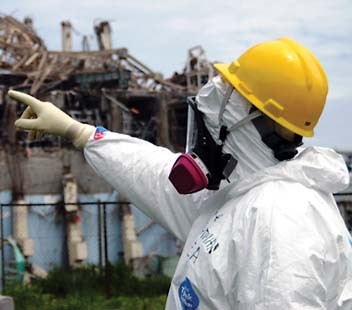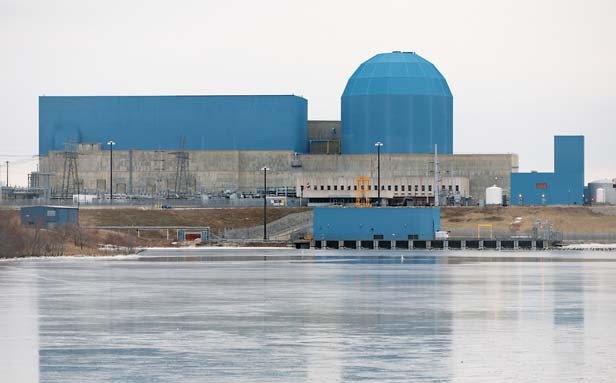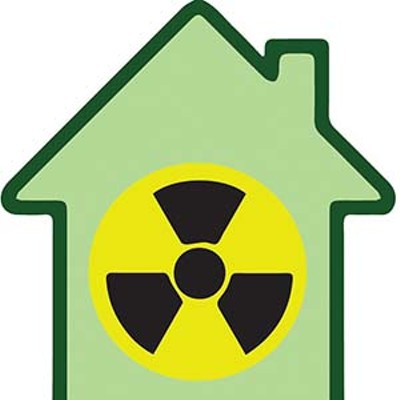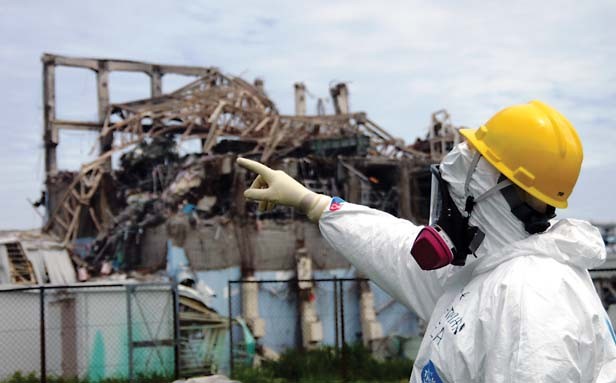
On Friday, March 11, 2011, an afternoon earthquake with a 9.0 magnitude struck off the coast of Japan, unleashing a 14-meter tsunami that about an hour later would devastate the country’s Fukushima Daiichi nuclear power plant site. Designed only to withstand a tsunami of less than 6 meters, three nuclear reactors lost power as the natural disaster knocked out offsite power and swept away backup generators. Unable to cool the reactors and with spent fuel pools losing water, attempts to cool the fuel through venting and multiple hydrogen explosions caused the release of radioactive material into the environment.
Now, even 50 miles from the reactor sites, children are kept indoors; Japan’s economy is expected to wane due to power shortages; and the damaged reactors’ owner, Tokyo Electric Power Company (TEPCO), is facing a bill of billions of dollars just for its emergency efforts in shutting down and cooling the reactors, according to various news reports.
While a tsunami isn’t likely to strike Springfield’s nearest nuclear neighbor – the 65-mile distant Clinton Power Station in DeWitt County – the crisis in Fukushima has called into question the safety of nuclear power plants across the U.S. and the preparedness of emergency managers to deal with a similar multi-pronged disaster.
Already, the U.S. Nuclear Regulatory Commission in response to Fukushima has completed initial inspections at each of the country’s 104 nuclear reactors. Through March and April, inspectors were charged with assessing each plant’s ability to react to multiple, concurrent threats, including power blackouts, fires, floods and earthquakes.
“Our inspectors found all the reactors would be kept safe even in the event their regular safety systems were affected by these events,” said Eric Leeds, director of the NRC Office of Nuclear Reactor Regulation, in a May 13 news release concerning the post-Fukushima inspections. But he added that, “a few plants have to do a better job maintaining the necessary resources and procedures.”
A closer look at the inspection report for Clinton’s power plant, owned by Exelon Nuclear, reveals several issues, including: a fire pump in such poor condition that it had to be shut down during a test run; hydrogen igniters (used to keep the gas from accumulating into an explosion risk) that lacked adequate power supplies; and firefighting equipment stored in buildings susceptible to earthquake damage.
Clinton power plant spokesperson Bill Harris says all of the post-Fukushima inspection issues are minor. “They found no significant safety findings,” Harris says, echoing an NRC statement repeated throughout the report. Harris says that all of the identified systems were backup systems and not the primary line of defense in the event of an accident or natural disaster.
The report also notes, however, two instances in which plant operators had previously noticed nonfunctioning or inadequately functioning equipment but had not made strides to correct the issues. The first instance involved the fire pump operators shut down early during the NRC inspection. “During the past year, there have been several material condition issues identified by the licensee,” the report states, adding that “no specific commitments were found during the review for the licensee to maintain this pump.” The other instance referred to one of three redundant switches for a flood protection valve that plant operators discovered wasn’t working in July 2010. Despite the discovery, operators “signed off the functional test as satisfactory.”
Harris says all of the issues listed in the report have been put into a tracking system and “are all being addressed, which is the really important thing.”
“Again, there are no significant deficiencies,” he says. “All of the systems they looked at would perform their intended function. All of the things are things that will make the system better or optimize operations of these components. … We’re constantly looking at these complex systems and doing the things we need to do to make them work better.”
Harris adds that the plant, perched on the edge of Clinton Lake, sits about 40 feet above the lake levels during the largest recorded flood. While the fire protection system may be at risk during an earthquake, according to the inspection reports, Exelon points out in an April 2011 fact sheet that diesel generators and their fuel, as well as emergency reactor cooling systems, are designed to withstand seismic waves measuring between 6.0 and 6.9 on the Richter scale.
Steve Mischke is one of state government’s resident inspectors, assigned full time to Clinton power plant by the Illinois Emergency Management Agency (IEMA). He says he hasn’t seen the post-Fukushima inspection report but he did assist the NRC with parts of the most recent inspection. Mischke says he’s confident the plant is safe.
He says the inspections went “above and beyond normal routine inspection activities.” He says it’s accurate that parts of Clinton’s fire protection system are not designed for the “beyond design basis events” the inspections were addressing. “However, it is very robust and a number of backup fire pumps are available, and additionally the station does have a very large, portable diesel pump, in case the others aren’t operating.”
He adds that Clinton operators “prioritize their work here based on safety significance of the items” and that operators “get them repaired within a good period of time.”
Past preparations
In November 2009, the Federal Emergency Management Agency (FEMA) ran a test drill in DeWitt County to see how well local and state emergency managers could respond to a crisis at Clinton’s nuclear power plant.
During the drill, the state-led “unified area command” directed some hypothetical evacuees to travel through a hypothetical radioactive plume to get to the only reception center the emergency management team had opened. In an identical real-life situation, evacuees’ health and safety would have been compromised, as they would have unnecessarily been exposed to radioactive particles.
The Illinois Emergency Management Agency (IEMA) says evacuation mistakes like the one it made during the Clinton drill are not common. “Since that time I’m sure we’ve considered that,” says Dave Smith, head of IEMA disaster assistance and preparedness, who remembers the Clinton drill. “Typically we open all of the evacuation centers.” Clinton has three – one each in Decatur, Champaign and Normal – all located about 25 miles away from the power plant.
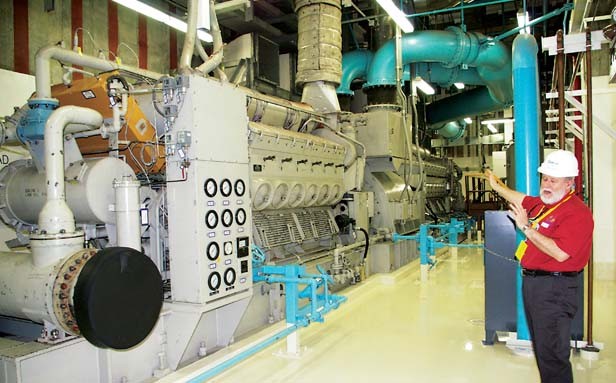
IEMA representatives add that the condensed time frame of each emergency drill makes errors more likely. In a real-time situation, the same responses would most likely take place over the course of 24 to 48 hours, whereas in a drill they all occur within four or five hours.
Though the state’s single reception center decision was the only part of the drill labeled by FEMA as a “deficiency,” the county was also cited because “key personnel with leadership roles did not consistently demonstrate effective direction and control of the overall response effort for which they were responsible.”
During the exercise, all of the emergency management decision-makers left the emergency operations center for more than 30 minutes to brief the media, leaving no one in charge and no one designated to pass along any messages should the situation change. Though, during the exercise, the wind direction changed, possibly requiring more evacuations, the update went unnoticed and even when the decision-makers returned no discussion of the matter took place.
At the time, Teresa Hall was involved with the drill as a part of the American Red Cross. “Those were all administrative kinds of decisions made that day. Whatever it says in that report is a thorough response from FEMA,” she told Illinois Times last week.
She’s quick to note that the DeWitt County Emergency Services and Disaster Agency’s coordinator during that drill resigned a few months later. Now, appointed just two weeks ago, Hall herself is the local ESDA coordinator. “We are well aware of the problems that existed in the past, and we will do our very best to make sure all aspects of the exercise that are put forth to us are covered exactly as they should be,” Hall says, confident that she and the area’s emergency workers are prepared for a nuclear disaster. The next FEMA drill, her first as ESDA coordinator, will take place this November, she says.
State of safety
Joe Klinger, IEMA’s assistant director, says Illinois hosts one of the best state nuclear safety divisions in the country. He’s particularly proud of IEMA’s resident inspectors, including Clinton’s Mischke, who live near and work within a designated Illinois nuclear power plant.
“We’ve got our own eyes and ears. … I think we’re uniquely situated to make sure that if there is a safety concern that’s not being addressed, we’ll point it out [to the NRC],” Klinger says.
He also touts Illinois’ nuclear power plant monitoring system, which transmits 1,000 measurements and equipment statuses from each power plant back to the state.
Kay Foster, head of the bureau of nuclear facility safety within IEMA’s Division of Nuclear Safety, says having all of that information at her fingertips has kept her from moving to other states’ nuclear safety divisions. The Florida native moved to Illinois to begin her career in 1986. “Nobody else has the program like we do. I couldn’t leave here. I just felt good about what we were doing and what kind of information we have. I knew that if I went to another state I’d be totally frustrated without it,” Foster says.
The data would help IEMA determine how much and what kind of damage occurred at a plant during a nuclear disaster, which in turn would help scientists predict the environmental consequences.
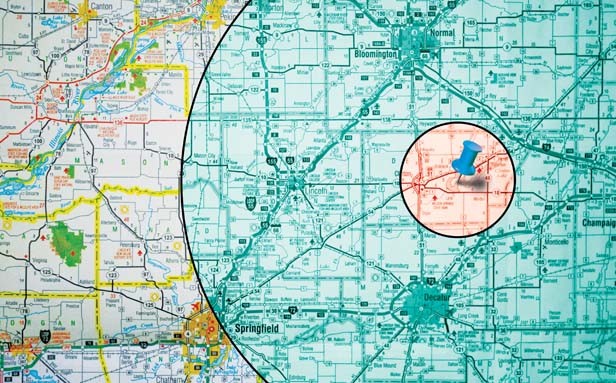
One of those consequences could be the release into the environment of radioactive elements, including Iodine 131, which only comes from nuclear power plants. During the ongoing crisis in Fukushima, government officials have found dangerous levels of I-131 in crops as far as 90 miles from the damaged reactors.
But I-131 didn’t stop there. It traveled on to the U.S., and IEMA scientists found traces of Japan’s I-131 in Illinois air and grass samples through March and April. The government does not consider such low levels a threat to human health (they found less than .1 picocuries per cubic meter in every Illinois air sample, and the “safe” limit is 200 picocuries), but it was the first time in 25 years – since the 1986 Chernobyl nuclear accident – that Illinois scientists were able to see I-131 in air and grass samples.
“You find it in labs – it’s manufactured for medical purposes – but we don’t often have an occasion where we can look for it in the environment,” says IEMA certified health physicist Larry Haskell. It took an entire weekend for the lab’s gamma spectrometer to measure the .098 picocuries of radioactive Iodine found in Springfield’s air in late March, but Haskell says higher volumes from a nearby plant disaster would be detected within an hour. The Fukushima disaster provided an opportunity for IEMA scientists to test their equipment and put their skills and knowledge to the test, he says.
Should disaster strike an Illinois nuclear plant and send more significant amounts of I-131 into the environment, Illinois residents won’t be prepared because of the state’s weak policy for distributing Potassium Iodide, or KI, according to David Kraft of the Chicago-based anti-nuclear group, Nuclear Energy Information Service.
KI is a stable form of Iodine that, when absorbed by the thyroid gland prior to exposure to I-131, blocks the organ’s absorption of the radioactive version. Some people are severely allergic to the drug, which can also cause upset stomach, rashes and inflammation of the salivary glands.
Those side effects are part of the reason IEMA’s radiological emergency plans call for Illinois to never recommend that anyone take the drug except emergency responders and those who can’t be moved during an evacuation, Klinger says. Instead, IEMA will only tell residents in an affected area when would be a good time to consider taking KI.
IEMA hasn’t mass-distributed KI since 2002, when for a weekend anyone within any Illinois nuclear power plants’ 10-mile evacuation planning zones could stop by distribution centers and pick up a supply for themselves and their families. Klinger says only about seven percent of that population bothered to pick up any KI.
Kraft says Illinois should make sure every family within 50 miles of a nuclear plant has access to and knowledge of how and when to use KI before a nuclear accident.
“The key is you have to get it an hour or two before you’re exposed. If you take it later, it may not work,” Kraft says. “Iodine is an early devastator and it comes out of a reactor disaster quick and early. ... Every household within that planning area should have it available.”
IEMA says the Fukushima crisis has caused the agency to consider another mass distribution, possibly partnering with other state agencies to get the word out. But the agency will also continue to focus on shelter and evacuation as its preferred methods of protection against radioactive isotopes.
In line with NRC guidelines, Clinton and all other Illinois nuclear power plants have 10-mile radius evacuation planning zones. Within those zones, local and state emergency managers and responders, from firefighters to school bus drivers, are prepared to move affected residents to reception centers located about 25 miles away.
NEIS says those zones are too small and that Illinois should follow the recommendation of the Physicians for Social Responsibility, another anti-nuclear group, which calls for a 50-mile radius evacuation planning zone instead of the current 10-mile zone. The group says there is no safe level of radiation exposure and points to the U.S. recommendation after Fukushima that all Americans within 50 miles of the damaged reactors evacuate.
Sangamon County’s all-hazards emergency management plan says the Clinton power plant is 65 miles away, a distance that “would take our county out of the vulnerability of a possible nuclear hazard from a nuclear plant.” But a look at a map shows that 65 miles is just the driving distance from the plant to the center of Springfield. An as-the-crow-flies 50-mile circle around the Clinton plant encompasses much of Springfield’s northeastern quadrant as well as Sangamon County towns including Illiopolis, Sherman and Rochester, according to an interactive map by the Physicians for Social Responsibilty.
Sangamon County Office of Emergency Management’s David Butt says the 65-mile measurement has been in the plan since before he became OEM director 16 years ago and that the county has always followed the lead of the state on nuclear issues. Butt says he’ll investigate the inconsistency as his office works on the plan’s required biennial updates. He adds that he’s confident the existing all hazards plan, a general plan addressing a range of disasters from tornadoes to chemical spills, would work should Sangamon County ever have to deal with fallout from the Clinton power plant.
Butt says Sangamon County’s experience with a major chemical explosion in 2004 at the Formosa plastics plant in Illiopolis would prove helpful during a nuclear disaster. “If there would be a nuclear event at Clinton that did have ramifications into Sangamon County, that experience in 2004 shows us that the plan is addressing the right areas and that we have established good partnerships in order to have the necessary activity that such a situation calls for,” Butt says.
IEMA says Clinton’s 10-mile evacuation planning zone follows current federal guidelines and is sufficient for immediate action. “If we need to go beyond that area, for whatever that reason would be, we would work with the surrounding counties, or the county outside that 10 miles, to develop plans for evacuation or whatever, just like we would do if there was a train derailment,” says IEMA’s Dave Smith. “At some point you have to say, ‘This is the area where we want to develop very detailed plans for immediate action. Beyond that we go to our existing emergency operations plans that can be implemented in the event of a tornado or a chemical spill or, you name it.’”
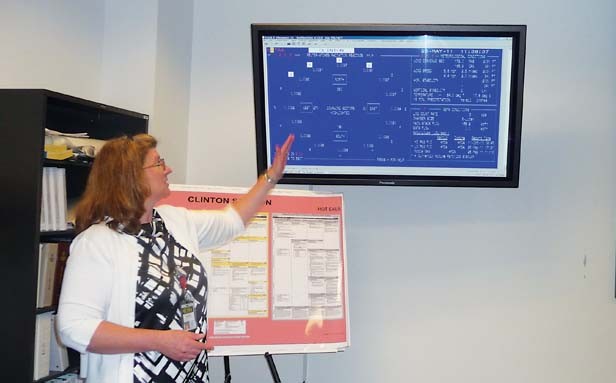
Smith adds that the 50-mile radius zone surrounding a nuclear power plant is considered a “pathway ingestion zone,” the area where the concentration of radioactive material in the atmosphere is thought to have become low enough that it wouldn’t be harmful upon contact. If consumed while drinking or eating, however, and absorbed inside the body, it could prove a significant health risk. IEMA is prepared, in that case, to restrict the use of any affected crops or livestock.
Though affected, the area wouldn’t require immediate emergency action, Smith says. “We do have plans to go out to the 50-mile ingestion pathway zone, but they’re different than the 10-mile evacuation planning zone,” Smith says, adding that, though affected, the area wouldn’t require immediate emergency action.
IEMA says that part of the reasoning behind the expansive evacuation zone the U.S. government recommended for Americans near Fukushima (the Japanese government has only evacuated those within a 12-mile radius) was due to multiple damaged reactors all within a close space. Clinton only hosts one reactor.
Kraft of NEIS is also critical of the design of nuclear power plants in general. He concedes that Clinton’s plant, which began operation in 1987 and is one of the newest nuclear plant models, is a much improved version of those damaged in Fukushima. He adds, however, that Illinoisans shouldn’t be breathing easy. Northern Illinois hosts four reactors of the same model as those damaged in Japan, a fact that Kraft says should concern even residents of Springfield, as “radiation has no boundaries.”
Harris, of the Clinton plant, says comparing Japan’s reactors to those in Illinois and the U.S. isn’t entirely appropriate. “It’s like doing apples to oranges,” Harris says, explaining that one of the unknowns that could have played a roll in the Fukushima disaster is whether or not Japan made any upgrades to its plants as the U.S. did after the 9/11 terrorist attacks. “All of this is unfolding,” Harris says.
All sides agree that there’s plenty more to learn from Fukushima, though it could be months or years before all that went wrong, and all that could have been avoided, is brought to light.
Whatever those lessons are, the sooner they’re revealed the better, Kraft says.
“The lessons learned at Fukushima are going to be important. We believe they need to come out as soon as possible,” he says. “The farther you get from the disaster, the more the memory recedes. The sense of urgency goes away, and you’re distracted by the current crisis of the day.”
Contact Rachel Wells at [email protected].

